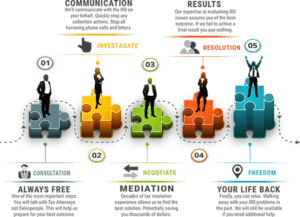IRS Fresh Start Program
What is the Fresh Start Initiative?
Here is a statement about the Fresh Start Program direct from the IRS website:
“The goal is to help individuals and small businesses meet their tax obligations, without adding unnecessary burden to taxpayers. Specifically, the IRS is announcing new policies and programs to help taxpayers pay back taxes and avoid tax liens.”
Some of the highlights of the Fresh Start program are:
- It created the Stream-Lined Installment Agreement “SLIA”. This allows taxpayers to set up a payment plan with less paperwork.
- It increased the maximum amount for a streamlined installment agreement from $25,000 to $50,000. It also allows you to pay down your dues below $50,000 to qualify for SLIA. Keep in mind this is with ‘limited’ financial information. Although interest continues to accrue, this was intended to allow more people into the plan by minimizing the paperwork necessary to qualify.
- It increased the maximum term for SLIA from 60 months to 72 months.
- It expanded and streamlined the Offer in Compromise program to include a broader range of eligibility.
- It allows for Penalty Abatement in certain cases, such as unemployed taxpayers.
- Increased to $10,000, the amount a taxpayer owes before the IRS files a Notice of Federal Tax Lien. It is important to note that in some cases the IRS may remove a tax lien. The form to do this can be found here.

Some of the highlights of the Fresh Start program are:
It created the Stream-Lined Installment Agreement “SLIA”. This allows taxpayers to set up a payment plan with less paperwork.
It increased the maximum amount for a streamlined installment agreement from $25,000 to $50,000. It also allows you to pay down your debt below $50,000 to qualify for the SLIA. Keep in mind this is with ‘limited’ financial information.
Although interest continues to accrue, this was intended to allow more people into the plan by minimizing the paperwork necessary to qualify.
If your debt is more than $50,000 you can still get a payment plan but it requires you complete an IRS 433-A or 433-F financial form which can be found here: https://www.irs.gov/pub/irs-pdf/f433a.pdf
It increased the maximum term for SLIA from 60 months to 72 months. It expanded and streamlined the Offer in Compromise program to include a broader range of eligibility. It allows for Penalty Abatement in certain cases, such as unemployed taxpayers.
Increased to $10,000 in most cases, the amount a taxpayer owes before the IRS files a Notice of Federal Tax Lien.It is important to note that is some cases if you are in a Direct Debit Installment Agreement, the IRS may withdraw a tax lien.
Requiring the taxpayer file form 12277 which found here: https://www.irs.gov/pub/irs-pdf/f12277.pdf?_ga=1.68670033.1736408826.1480743540
